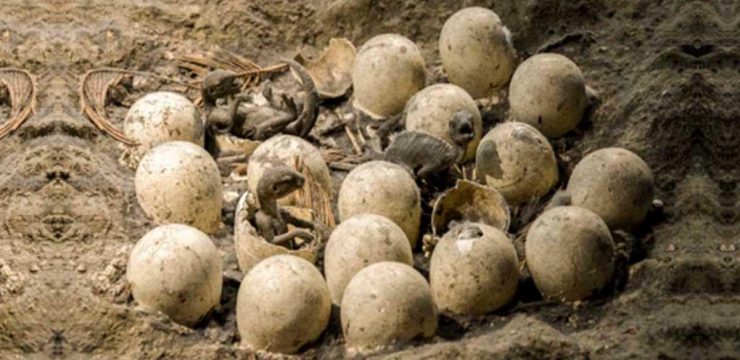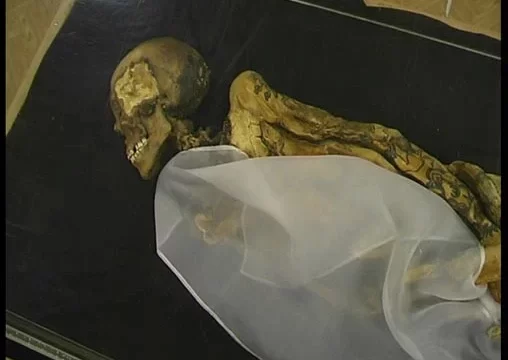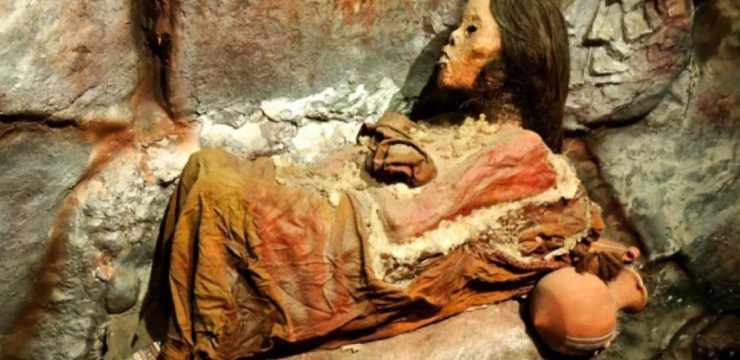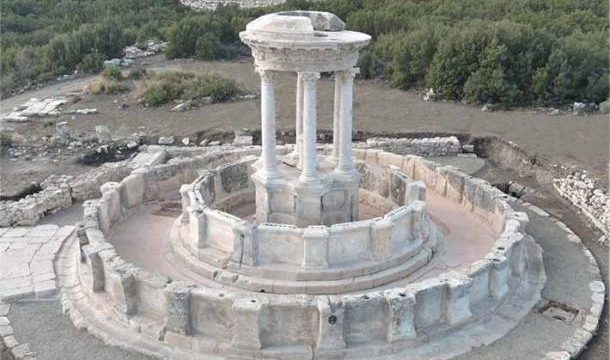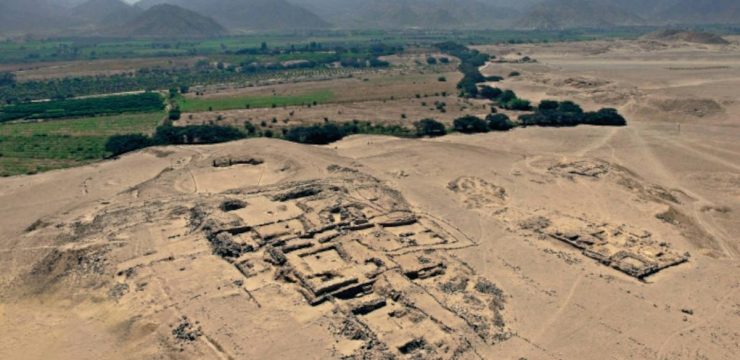Archaeologists working at the Áspero site in western Peru, located in the Lima region, have made a remarkable discovery that sheds light on the ancient Caral civilization—the oldest known culture in the Americas, dating back to around 3,500 to 1,800 B.C. A burial of an elite woman, uncovered in pristine condition, is offering new insights into the complexity and social structure of this early society. Not only does this find underscore the Caral people’s sophisticated cultural practices, but it also highlights the prominent roles that women held within their communities.
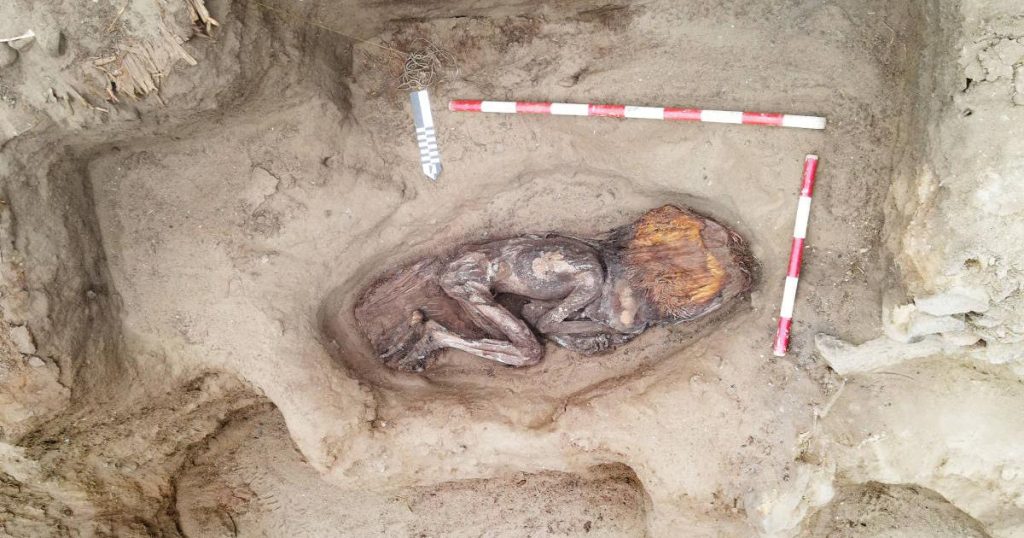
The burial site, discovered within a public structure called Huaca de los Ídolos in the ancient fishing town of Áspero, lies just 0.4 miles from the Pacific Ocean. The woman’s remains, dating from between 3000 and 1800 B.C., were excavated by a team led by Dr. Ruth Shady Solís, director of the Caral Archaeological Zone and backed by Peru’s Ministry of Culture. What makes this burial particularly extraordinary is its level of preservation—an exceedingly rare occurrence in the arid coastal desert of Peru, where most ancient human remains are found in poor condition. In this case, however, the woman’s skin, hair, and nails remained intact after thousands of years.
The elite woman had been carefully wrapped in layers of cotton textiles, woven mats, plant fiber bundles, and fishing nets. Alongside her body, archaeologists found an impressive collection of grave goods. Among the items were a panel made with colorful macaw feathers, a toucan beak intricately decorated with green and brown beads, an Amazonian snail shell, sweet potatoes, and a collection of fishing and weaving tools. Her head was adorned with a fiber headdress made from carefully wound threads. These burial items were thoughtfully arranged, indicating that detailed funeral rites were conducted and that the burial held symbolic significance for the Caral people.
This discovery further confirms the high level of artistic and technological ability possessed by the Caral civilization. One of the most compelling artifacts was the feathered panel, which is now considered among the oldest examples of featherwork in the Andean region. The craftsmanship displayed in this piece is astonishing and reveals how the Caral developed refined techniques to create such complex items. It suggests that artistic expression and skill were integral to their culture and likely played a role in social status and ritual practice.
The exotic nature of several burial goods also indicates that Áspero’s residents were engaged in long-distance trade. Items from both jungle and highland regions have been unearthed at the site, implying a broad and peaceful exchange network. This network would have provided access to non-local goods and materials, which in turn likely strengthened the Caral’s ability to build a structured and interconnected society. Artifacts such as Amazonian shells and tropical bird feathers hint at frequent contact with distant communities and the sharing of cultural practices and resources.
What stands out even more is how the burial reflects the woman’s elite status. The embroidered textiles, decorated toucan beak, sophisticated feather art, and tools associated with weaving all suggest she held a prominent position within Caral society. While the Caral left behind no written records, grave goods such as these offer archaeologists a window into the lives and hierarchies of ancient peoples. In this case, they point clearly to the woman being an individual of power, influence, or spiritual importance.
This find contributes to growing evidence that women in the Caral civilization held leadership roles and were not excluded from positions of authority. Other notable burials discovered at Áspero, such as the “Lady of the Four Tupus” in 2016 and the “Elite Male” in 2019, show that both men and women were buried with high-status items. These discoveries suggest a society where leadership was shared across genders, challenging long-standing assumptions that ancient civilizations were universally male-dominated.
The Lady of the Four Tupus, for instance, was interred with four brooches shaped like birds and monkeys, items that also indicate elite status. Her burial and that of the newly discovered woman were found close together, suggesting that this area of the site was reserved for individuals of significant rank or social power. Researchers have drawn parallels between this pattern and burial practices found in later Andean sites, such as La Galgada in the Ancash region of western Peru, where clusters of high-status individuals were also buried in close proximity.
Though we do not know the names or exact titles of these individuals due to the lack of a written Caral language, the archaeological evidence tells a powerful story. It speaks of a complex, organized society in which leadership, ritual, and social structure were deeply woven into daily life—and where women could be as influential as men. These findings are crucial in reshaping modern understanding of gender roles in ancient history.
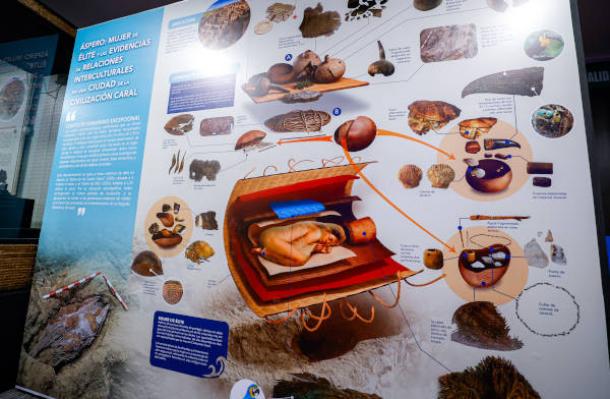
Áspero itself played an essential role in the development of the Caral civilization. Spanning roughly 46 acres, the site features 22 architectural complexes and was once a thriving hub of fishing, trade, and social organization. Its location near the Pacific Ocean made it a key point of maritime activity, and trade connections with inland and jungle regions allowed Áspero’s residents to access a wide range of resources. Before archaeological work began in 2005, the site had been largely forgotten and even used as a dumping ground by the local community. Since then, the efforts of the Caral Archaeological Zone project have transformed Áspero into a celebrated cultural landmark.
Today, Áspero is not only an important site for scientific research but also a place of cultural pride and educational value. It draws tourists, researchers, and students, all of whom contribute to the local economy and help preserve the site’s legacy. Ongoing excavations continue to provide new discoveries, deepening our knowledge of the Caral civilization and its impressive achievements.
Researchers from the Caral Archaeological Zone are continuing their study of the elite woman’s remains. Future investigations will focus on uncovering details about her health, lifestyle, diet, and the potential causes of her death. By analyzing her burial in depth, scholars hope to unlock even more about the daily life, beliefs, and structure of the Caral society. Each new artifact and burial site adds another layer to the story of the oldest known civilization in the Americas—one where women played vital roles in shaping their world.
